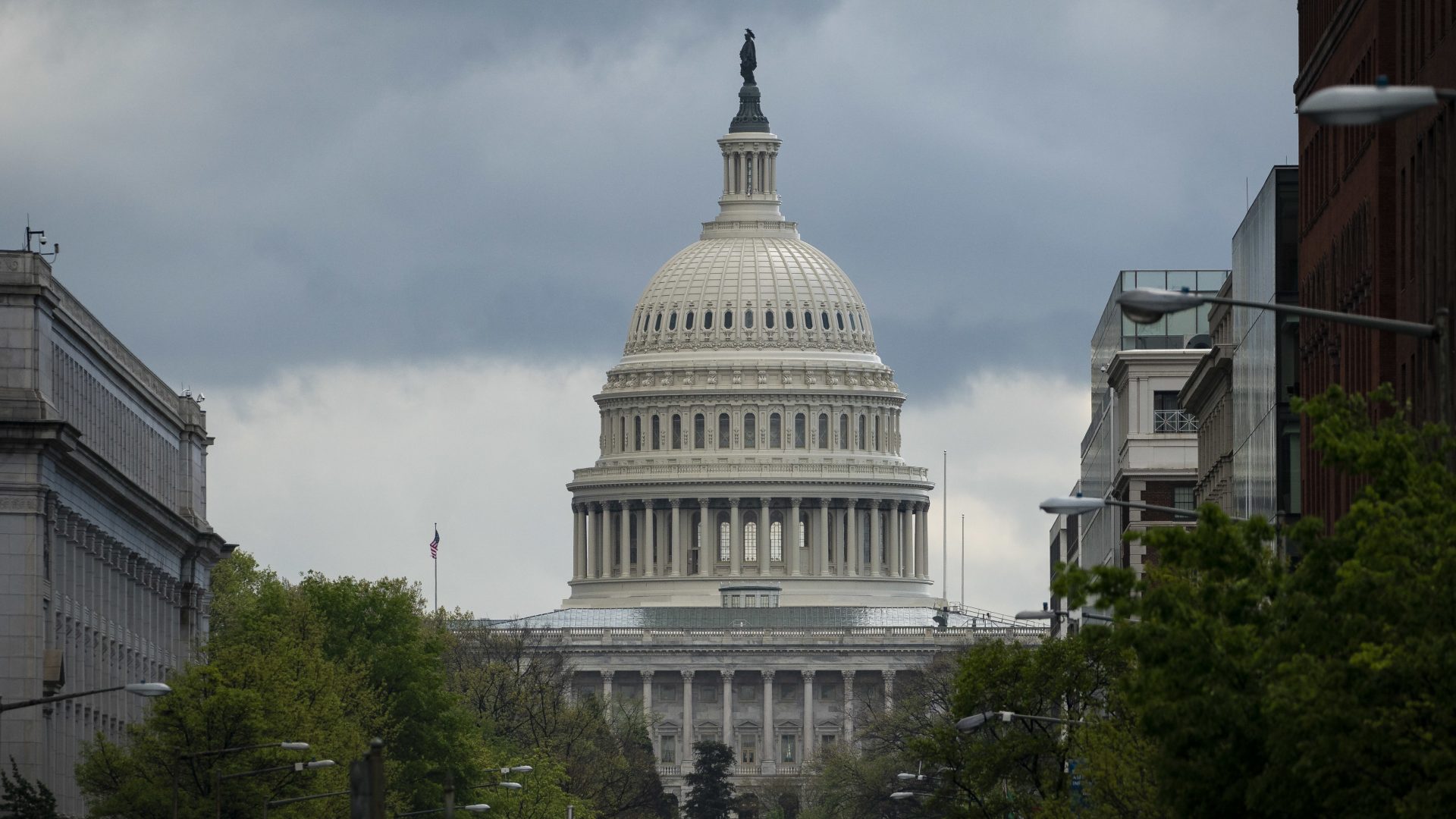
The U.S. Capitol is seen on April 13.
Al Drago / Bloomberg via Getty Images

The U.S. Capitol is seen on April 13.
Al Drago / Bloomberg via Getty Images

Al Drago / Bloomberg via Getty Images
The U.S. Capitol is seen on April 13.
The coronavirus pandemic has upended the daily work of Congress.
Starting in March, House and Senate leaders delayed bringing back members for several weeks as public health guidelines recommended social distancing because of the outbreak.
The Senate finally returned in May, but the much larger House still stayed mostly away as a result of advice from the attending physician to Congress. The same month, the House approved historic rule changes allowing remote voting and hearings.
The virus has infected several lawmakers and forced many more members to self-quarantine. Dozens more members of their staffs and Capitol Hill workers have tested positive. And it remains an ongoing threat.
Two Republican lawmakers, Texas Sen. Ted Cruz and Arizona Rep. Paul Gosar, were the first members of Congress to announce self-quarantines on March 8. Both had attended the Conservative Political Action Conference in National Harbor, Md., a few days earlier. An attendant at the conference had fallen ill, its organizers revealed.
Loading…
The following week, the first two members of Congress said they tested positive for COVID-19. Florida Republican Rep. Mario Diaz-Balart and Utah Democratic Rep. Ben McAdams both said they developed symptoms after a March 14 vote on a coronavirus relief package.
Since that time, dozens more lawmakers entered self-quarantine as a result of exposure to someone who was sick, including fellow members of Congress, constituents and dignitaries.
And by late July, at least 85 Capitol workers have reported a positive test or were presumed so, including more than two dozen members of the U.S. Capitol Police. On July 24, Gary Tibbetts, a longtime staffer for Florida Republican Rep. Vern Buchanan, died from COVID-19.
And some lawmakers have taken antibody tests to see if they were previously ill. Among them, Democratic Sens. Tim Kaine of Virginia and Bob Casey of Pennsylvania, both said they tested positive months after experiencing symptoms in the spring.
To stem the flow of new cases, both chambers have issued new social distancing guidance. Also, the U.S. Capitol remains closed to public tours and open only to members, staff, press and official business visitors.
In late July, House Speaker Nancy Pelosi also issued a new mask mandate after Texas Republican Rep. Louie Gohmert, who has often rejected mask protocols, tested positive for the illness. Gohmert had attended several hearings a day before test, and returned to the Capitol following the White House screening that caught his infection.
Loading…

A collection of interviews, photos, and music videos, featuring local musicians who have stopped by the WITF performance studio to share a little discussion and sound. Produced by WITF’s Joe Ulrich.
The days of journalism’s one-way street of simply producing stories for the public have long been over. Now, it’s time to find better ways to interact with you and ensure we meet your high standards of what a credible media organization should be.